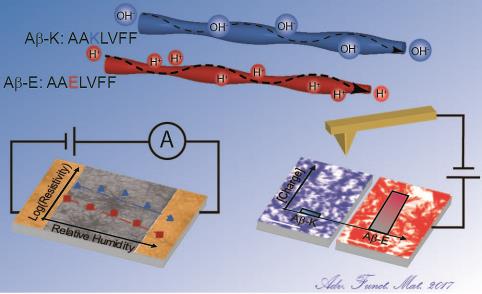
Prof. Nurit Ashkenasy - Research Group
Bio-Electronics and Bio-Sensors

Controlled fabrication of nanopores by focused electron beam induced etching
In the cellular system, protein based nanopores (NPs) and nano-channels are being used for controlled transfer of ions and bio-molecules through the cell membrane. Our aim is to mimic this system in an artificial surrounding in which we can study the interactions between the molecules and the NPs’ rims during the transit and exploit them in biosensing applications. Toward this aim we have recently developed a novel focused electron beam induced etching (FEBIE) process, in which the chemical etch of silicon nitride by XeF2 gas is enhanced by an electron beam, facilitating localized reactions. This process eliminates the need for high energy electrons of transmission electron microscope (TEM) or focused electron beam (FIB), making it more accessible. We have explored the effects of several process variables, such as time, pressure, and electron energy, on the etching process, and have gained understanding of the NP formation mechanism and the resulting 3-dimensional structure. We are now able to controllably manufacture apertures with size ranging from 15 to 200 nm diameter in silicon and silicon nitride membranes. This work has been published in two manuscripts in the journal Nanotechnology, in 2009 and 2011. Future work will focus on the application of the nanopores for biosensing and related applications.
